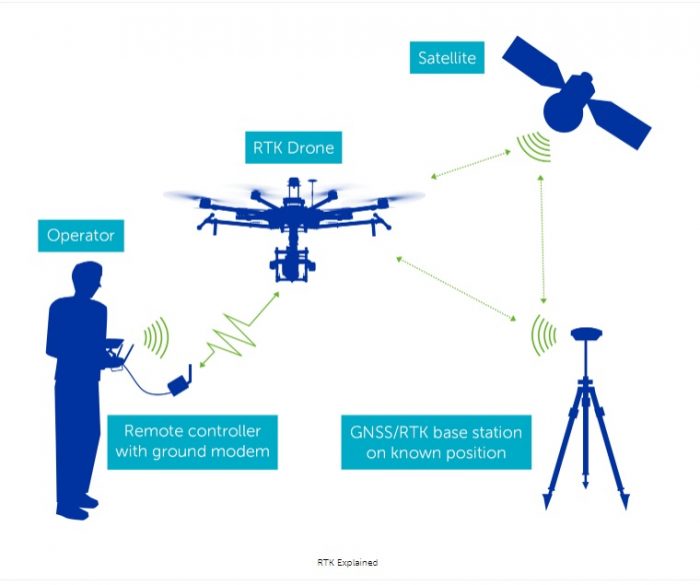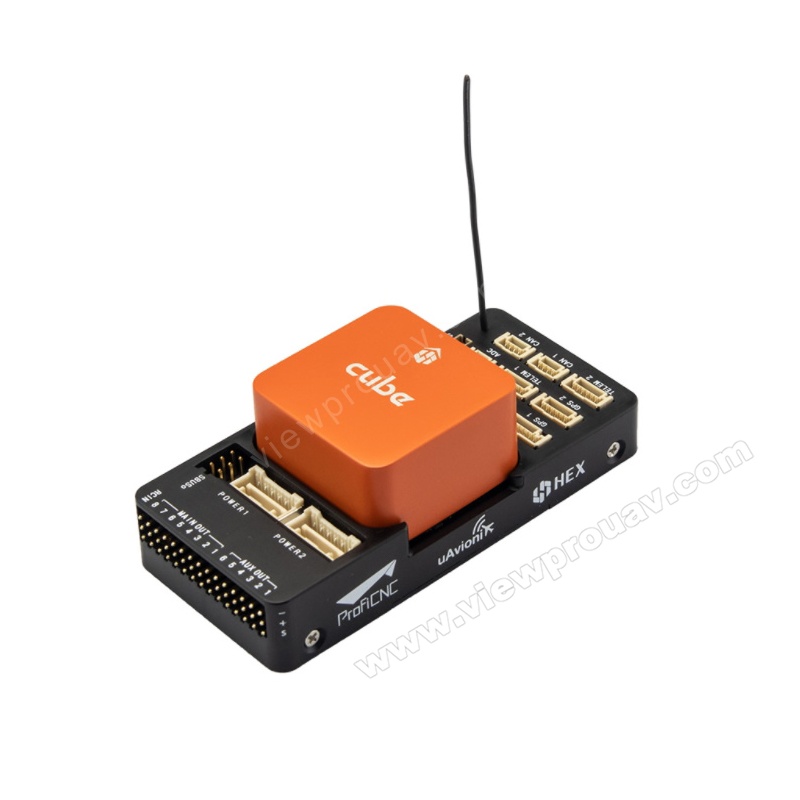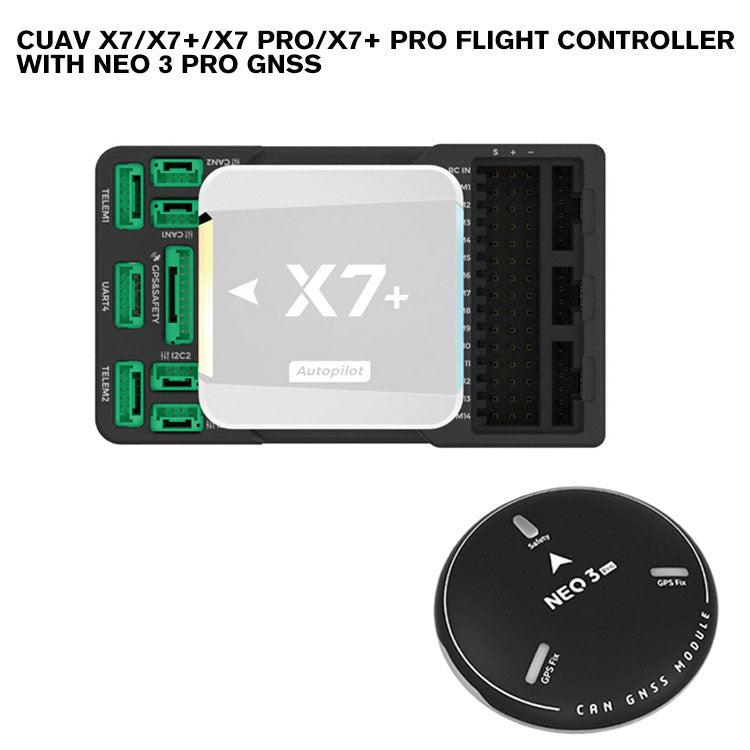Unequaled Accuracy: SparkNavi Drone Flight Controller and GNSS/INS Made in Taiwan
Unequaled Accuracy: SparkNavi Drone Flight Controller and GNSS/INS Made in Taiwan
Blog Article
Exploring the Role of Drone Trip Controllers in Enhancing Trip Stability and Navigation Performance
The innovation of drone modern technology has actually substantially boosted the value of flight controllers, which offer as the mind of these airborne cars. By integrating real-time information from a range of sensors, trip controllers enhance flight stability and navigating effectiveness, ensuring that drones can operate smoothly also in intricate environments. This discussion will discover the vital elements that contribute to these enhancements, in addition to the implications for the future of independent flight. What technologies exist ahead that could even more transform the capabilities of drone trip controllers?

Recognizing Trip Controllers
Flight controllers are essential components in the performance of drones, working as the minds that maintain and take care of trip procedures. These innovative tools procedure information from numerous sensing units, consisting of accelerometers, gyroscopes, and GPS, to make certain that the drone keeps its desired trip course. The trip controller translates this data and executes commands based on pre-defined formulas, making it possible for the drone to react to environmental modifications, such as wind or challenges.
The primary feature of a flight controller is to keep stability during flight. It attains this by making real-time changes to the drone's motors and control surfaces, guaranteeing equilibrium and control. Furthermore, contemporary trip controllers include advanced functions such as waypoint navigating, enabling automated trip courses and improved functional effectiveness.
Comprehending the architecture of trip controllers is crucial for both hobbyists and experts. As technology advances, flight controllers have actually become a lot more compact and qualified, integrating synthetic intelligence to adjust and boost decision-making processes to complex trip circumstances.
Key Components of Trip Stability
Achieving optimal flight security in drones counts on a number of crucial elements that operate in performance to make sure smooth and controlled procedures. Central to this security is the flight controller itself, which refines information from different sensors to keep the desired trip perspective. This consists of accelerometers and gyroscopes that determine motion and alignment, permitting real-time adjustments to the drone's setting.
An additional essential element is the digital rate controllers (ESCs), which control the power delivered to the motors. By finely tuning electric motor rates in response to flight controller commands, ESCs aid preserve equilibrium and combat disruptions brought on by wind or unexpected movements.
In addition, the style of the drone's frame plays a pivotal function in trip stability. A well-structured framework reduces vibrations and boosts the total aerodynamic account, adding to smoother trip attributes. The combination of innovative formulas within the flight controller aids in anticipating changes, guaranteeing a responsive and adaptable trip experience.
With each other, these elements form a cohesive system that boosts a drone's security, permitting specific maneuvering and improved performance in various trip problems.
Navigation Effectiveness Strategies
Efficiency in navigation is important for optimizing drone operations, particularly in complicated environments. Efficient navigation techniques boost the ability of drones to traverse difficult terrains and prevent barriers, consequently improving functional efficiency and safety and security.
One popular strategy is the implementation of advanced general practitioners and inertial measurement systems (IMUs) that supply precise location tracking and positioning information. These innovations allow drones to calculate optimum trip courses in real-time, considering numerous variables such as wind problems and possible barriers.
An additional strategy involves the use of algorithms for path planning and optimization. Algorithms such as A * and Dijkstra's formula can be deployed to determine one of the most efficient route while reducing energy consumption and trip time. Incorporating device understanding models can allow drones to adaptively learn from their settings, boosting navigation capabilities through experience.

Effect On Autonomous Drones
The assimilation of sophisticated navigating strategies has actually greatly changed the capabilities of independent drones, allowing them to operate with greater autonomy and precision. SparkNavi drone flight controller and GNSS/INS made in taiwan. These enhancements are largely credited to sophisticated trip controllers that make use of real-time information processing and sensing unit fusion, permitting drones to browse complicated atmospheres seamlessly
The impact on independent drones extends past simple navigation; it includes enhanced barrier evasion, enhanced security throughout dynamic problems, and increased objective dependability. By leveraging algorithms that integrate machine discovering and expert system, drones can visit adapt to changing situations, making informed choices that optimize their trip paths while decreasing dangers.
Moreover, the execution of durable trip controllers has helped with the implementation of intricate jobs, such as airborne evaluations, delivery services, and farming monitoring, with minimal human treatment. This capability not just streamlines procedures yet additionally decreases human mistake, therefore enhancing general safety and security.
Because of this, the functional scope of self-governing drones has increased dramatically, making them important devices in numerous industries. Their capability to execute efficiently in varied situations emphasizes the crucial function that progressed trip controllers play in forming the future of unmanned airborne systems.
Future Fads in Trip Control
Regularly, advancements in flight control innovation are positioned to redefine the landscape of drone procedures in the coming years. Emerging patterns suggest a substantial change towards enhanced expert system (AI) click here for more combination, allowing flight controllers to process real-time data extra successfully. This development will certainly assist in enhanced decision-making capacities, permitting drones to adjust to vibrant ecological problems autonomously.
Additionally, the execution of device discovering formulas is expected to improve anticipating upkeep, thereby minimizing downtime and extending the lifecycle of drone components. This positive method to maintenance will be crucial as drone applications broaden throughout numerous industries, from agriculture to logistics.

.jpg)
Lastly, developments in this secure communication procedures will deal with safety and security and regulative issues, making certain that drones can run seamlessly in overloaded airspaces (SparkNavi drone flight controller and GNSS/INS made in taiwan). Collectively, these patterns direct towards a future where flight control systems are not only smarter and more reliable but also qualified of operating safely in a progressively integrated airspace
Final Thought
In conclusion, drone flight controllers are important to boosting flight stability and navigation performance through the advanced handling of sensing unit information. By keeping optimal trip mindsets and using sophisticated formulas for course optimization and barrier evasion, these controllers significantly add to the autonomy and operational safety of drones. As innovation continues to develop, additionally advancements in flight control systems are expected, promising improved performance and increased capabilities in the realm of unmanned aerial automobiles.
By incorporating real-time information from an array of sensors, trip controllers boost trip security and navigation effectiveness, making sure that drones can run efficiently also in intricate settings.Trip controllers are important elements in the functioning of drones, serving as the brains that manage and stabilize trip operations. Additionally, contemporary trip controllers include innovative attributes such as waypoint navigating, enabling for automated flight courses and boosted functional effectiveness.
Central to this security is the flight controller itself, which processes data from numerous sensing units to maintain the desired trip perspective.In final thought, drone flight controllers are essential to improving flight stability and navigating effectiveness via the innovative processing of sensing unit information.
Report this page